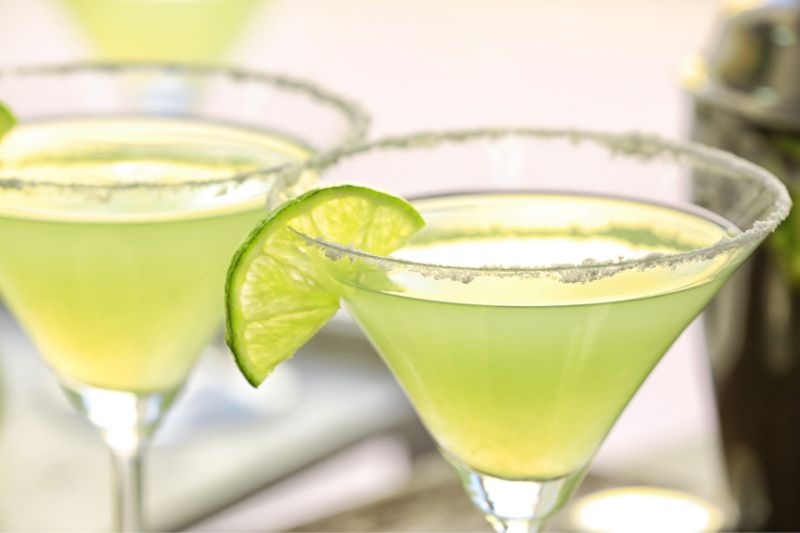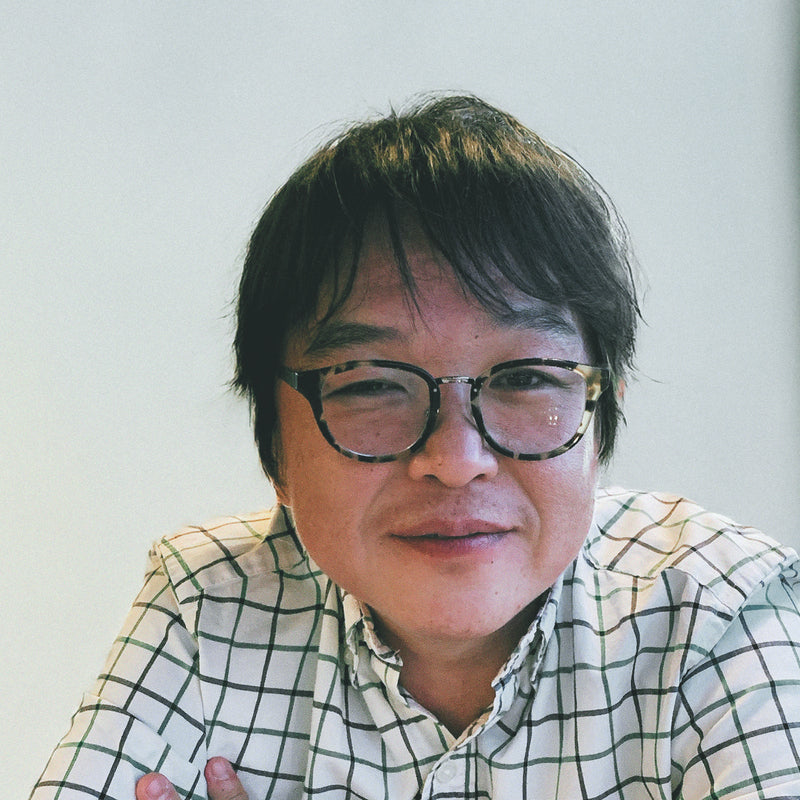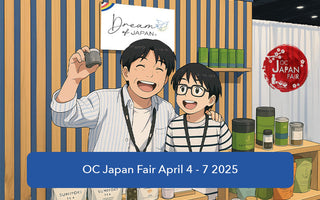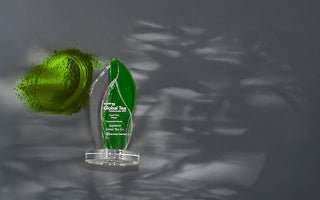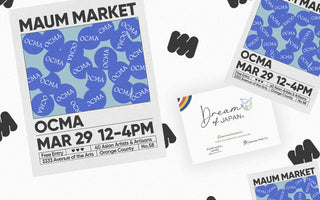Sony Park in Ginza (ソニーパーク銀座), Japan, reopened on January 26, 2025, by turning their historical building in Ginza and making it into a park format.


The Ginza Park has a sign saying "Tadaima" (ただいま meaning I'm home in Japanese), and the next building, Hermes, has a sign saying "Okaerinasai" (おかえりなさい welcome back.)
Sony made their first-ever attempt into a restaurant/café in the basement of the new Sony Park.
The name of the café is called 1/2 (Nibun no Ichi).
I am fortunate to interview Mr. Naotaka Ohashi (大橋直誉), who is the manager and the advisor at the café who was involved from the beginning of the project 2.5 years ago.
In this article, let me explain this restaurant/café and its signature tea drinks and dive into the fantastic experience and talent of Mr. Naotaka.
I hope you enjoy reading this post as you visit 1/2 to enhance your unique experience.
Brief History of Sony Park
The Ginza Sony Park Project began in 2016 with the vision of creating an open public space in the heart of Ginza as part of the redevelopment of the iconic Sony Building, which had been a part of Ginza for over 50 years.
The original Sony Building was constructed in 1966 under the leadership of Akio Morita (盛田昭夫), one of Sony’s founders. It was designed as a facility open to the community, featuring a 10-tsubo (approximately 33 square meters) public space, which Morita called “Ginza’s Garden.”
This small yet symbolic space embodied Sony’s desire to create a welcoming, communal environment in Ginza.
As the building aged, the vision for the future became to expand this “Ginza’s Garden” into “Ginza’s Park,” providing a new rhythm to the city and offering an inviting, interactive space for visitors.
In true Sony spirit, the two-phase approach made the redevelopment process truly unique and innovative.
- Phase 1 (2018 – 2021): Instead of immediately constructing a new building after demolition, the demolition site itself was temporarily transformed into an experimental public park. This unconventional idea turned the demolition process into an open experience, attracting 8.54 million visitors over approximately three years despite the challenges posed by the COVID-19 pandemic.
- Phase 2 (2021 – 2024): Following the success of the temporary park, construction resumed to complete the permanent Ginza Sony Park, scheduled for completion in August 2024, with a grand opening on January 26, 2025.
The Ginza Sony Park will carry Sony’s founding vision of an open space in the city, offering new experiences and creative interactions to locals and visitors for the next 50 years and beyond.
What is 1/2 (Nibun no Ichi) - The Café
When you pronounce 1/2 in Japanese, it is Nibun no Ichi (にぶんのいち), which is the name of the restaurant.
They use the alphabet [Nibun no Ichi] on their sign and menu and are not written in Japanese characters.
As the name suggests, their menu is a size of 1/2 of a full meal.
Each dish you order has 2 items with 1/4 of a portion, so each dish is 1/2.
Their tagline, "A Little Less, So Much More" (ちょっと少ない、だから良い), represents this concept.
"This concept started two and half years ago when this whole project started, along with the entire design, concept, and, of course, this tagline leads menu. Sony is hoping to bring this concept to other locations and the world in the long view," says Mr. Naotaka, who was involved in the development from the beginning.
 The menu is a 16-page booklet, and the tagline is nicely displayed on the last page. (more about this menu below)
The menu is a 16-page booklet, and the tagline is nicely displayed on the last page. (more about this menu below)
Why Sony Selected Yōshoku Menu in Ginza
Their menu centers around yōshoku (洋食), a Western-influenced Japanese cuisine with deep roots in Ginza's culinary history.
Ginza (銀座) was a "model of modernization" in the late 19th century when the Meiji (明治) government promoted western culture. Ginza's famous yōshoku restaurant Rengatei (煉瓦亭), established in 1895, was one of the first to serve such a style meal in Japan.
Rengatei is often said to have created the first "omurise" (オムライス) and "tonkatsu"(豚カツ) in its modern deep-fried style.
"I ate so much yōshoku for the past 2.5 years" (洋食を食べ続けた2年半でした) Mr. Naotaka posted on his Instagram story when the café opened.
Ambulance of the café
The café looks nothing like a café from the outside. It looked to me like a nicely designed Apple Shop in the basement from the outside.
 The entrance of the café looks nothing like an entrance to a café
The entrance of the café looks nothing like an entrance to a café
Once you enter the café, you notice a massive sign of Sony in the background.
This neon sign was used in the original Sony Building in Ginza in 1966.
The blue neon sign represents the important history of Sony.
Sony was founded in 1946, and people did not know about the company.
In 1957, a Sony neon sign was installed at the Sukiyabashi intersection (銀座・数寄屋橋交差点) which became the Ginza's landmark.
The neon sign was their first attempt to increase brand visibility.
The founders Akio Morita and Masaru Ibuka (盛田昭夫、井深大) mentioned that "By displaying the company name in a prime location, a first-class location (一等地), in Ginza, the goal was to make the Sony brand leave a lasting impression on the world."
「銀座の一等地に自社名を出すことで、ソニーというブランドを世の中に印象付けたい」
You get to see this meaningful historical sign.
(Technically, the first neon sign at the intersection differs from the Sony Building's neon sign; the one in the café is the one that was used in the Sony Building)
The Menu - 16-Page Well-designed Booklet
Once you sit at the seat, you are greeted with a menu booklet with 16 pages you can take home.
The menu looks so lovely, and it is noted as "2025 Vol. 1," like an actual book with an exact picture of a dish with a brief and ingredients of each menu.
It is so visually pleasing and has a nice amount of text (not too much, but good enough) that I could easily spend 10-20 minutes going through the menu to decide which one I want.
Here is the picture of the Omurice (オムライス) menu page I ordered. (You know I love eggs!)
After returning, I scanned the entire booklet, which you can download below if interested. (Please note that this is the 2025 Vol1, which is probably different from what the café offers now when you visit.) I hope they don't scold at me for scanning their menu... おこられるかな、、
Download the 2025 Vol 1 Menu Booklet
The Dish and Presentation
After I ordered the Omurice dish, they brought a paper table mat, which was very unique.
The mat has an empty space in the middle, and on both sides of the paper, it has a story of each dish that will be served.
This is how it looks.


Here is the "story" written for the Omurice. (My translation and its original text in Japanese)
"Yōshoku is a unique genre of Japanese cuisine that emerged during the Meiji era.
Following Japan’s opening to the world, Western recipes were introduced and adapted to suit local ingredients and tastes, giving rise to dishes such as omurice, curry, and Napolitan spaghetti.
However, looking further back in history, Japanese cuisine had long evolved by incorporating foreign influences. Ingredients and cooking techniques from China, tempura and nanbanzuke (sweet and sour marinade) from Portugal, and konpeitō (sugar candies) were all introduced before yōshoku ever took shape.
Japanese food culture has always grown by absorbing knowledge from other countries.
Even the everyday dishes we casually enjoy may reveal fascinating stories from the past—offering new discoveries when viewed through a different lens."
洋食は、明治時代に生まれた日本独自の料理ジャンルです。開国後に伝わった西洋のレシピが、日本の食材や味覚に合わせてアレンジされ、オムライス、カレー、ナポリタンなどが生まれました。しかし、時代を遡れば、中国から伝わった数々の食材や調理法、ポルトガルから伝わった天ぷらや南蛮漬け、金平糖など、洋食が生まれる以前から、日本の食文化は海外の知識を取り入れながら進化してきました。何気なく口にしている料理でも、その背景にある物語を知る事で、いつもとは違った新しい発見に出会えるかもしれません。
Imagine waiting for your food while reading a short story like this, it surely prepares you for the appetite in a different way. Kudo to Sony for how they do this!
I was so impressed by now, even though I have not had the food yet.
And the Dish!
And, this is how the plate looks on the matt I was explaining above.
It's like the menu I showed above came out as it was photographed. Amazing.

The presentation was truly excellent, and the taste was just right. I could taste the Western and Japanese together in my mouth, prepared by the short history story, which made me bring back to the Meiji era Ginza even as I bit the dish.
Though I only ordered one this time, as this is the 1/2 portion, I can imagine having two of them easily. Note that the 1/2 portion is "Japanese 1/2 portion"; I live in the USA, so for the American audience, it may be a bit less than 1/2, though : ). The portion reminded me of Tapas in Spain.
I asked Mr. Naokata what was the most challenging part of the project.
He says, "The hardest part was to fit what could be fit in the amount of 1/2."
He overcame the challenge; as I bit into each item, so many senses and tastes harmonized in my mouth that every bite was a journey.
The Tea
I have shared so much already.
The blog's main focus was going to be tea; as you know, this is a tea blog, but I lost time writing and sharing the whole experience.
I hope you don't mind... (^^)
So, the main topic.
Tea!
On their menu (in January 2025), they offer Oolong tea, coffee and Kombucha.
Coffee is a blend of Brazil and Columbia. There is nothing too special to note about the coffee and Oolong tea, but the highlight is the Kombucha.
Please refer to this article if you are not familiar with Kombucha; since I have a whole article about Kombucha, I am not going into too much about what Kombucha is.
In one sentence, Kombucha is a fermented beverage made by brewing tea with sugar and a symbiotic culture of bacteria and yeast (SCOBY), resulting in a slightly tangy, fizzy drink. (It is NOT Kobucha 昆布茶 that the Japanese use made of seaweed)
Special Kombucha Made for this Restaurant
The Kombucha this café carries is a unique custom-made kombucha by KBT (Kombucha Brewery Tokyo).

"There are very few companies that make Kombucha in Japan yet." Mr. Naotaka says.
He explained that he visited multiple companies to find the right Kombucha company.
"I wanted non-alcoholic beverages for people who do not drink alcohol but can enjoy with people who drink alcohol."
He selected Kombucha as it somehow feels like alcohol, but it is not.
I know that mocktails and non-alcoholic beer and wine are getting more popular in the USA and Japan, so he is undoubtedly thinking of accommodating the trendy audience who want non-alcoholic beverages.
"I asked KBT (Kombucha Brewery Tokyo) if they could make the Kombucha that tastes like beer hop."
As you can see in the bottle's image above, the flavor of "Hops" is mentioned, but it is not available on KBT's website or to the public. It is only available at this café at this point.
Mr. Naotaka particularly selected Yame Cha 八女茶 (Tea made in Yame City) for this. Mr. Naotaka is a member of the Fukuoka Yame Tea Promotion Council (福岡県八女茶振興推進).
Mr. Naotaka visited Yame City after he took part in World Culinary Championship (世界料理大会) in 2016, and when he met a Finnish person there, he felt how much the world already knows the quality of Japanese green tea
Here is his Instagram post about this:
The taste of the Kombucha was so refreshing, and as he mentioned, if I were told that this was alcohol, I would believe it.
The taste of this Kombucha reminded me of the French cocktail Panache, which is a carbonated cocktail made with beer and lemonade soda. "Panaché" is a French word meaning "mixed" or "blended," and it's commonly used to refer to this light, refreshing drink. Sometimes, it's also described as a beer spritzer or shandy (though shandy can vary depending on the region).
Kombucha also matches with the dish; I recommend this café to our tea-lover audience.
About the Director of the Café - Mr. Naotaka Ohashi (大橋直誉 -おおはし なおたか)
I am so fortunate to be able to talk and interview Mr. Naotaka, who I think is quite impressive in many ways.
As mentioned above, Mr. Naotaka was the center of creating this restaurant. As I learned more about him, I became more impressed by what he has done and who he is, and I see why Sony chose him to be the creator of their critical path of the new venture in the restaurant space.
This section is about him, but to me, it was the most interesting part of this article. (Don't get me wrong, the food and the tea was amazing!)
I went to the restaurant in January right after it opened, but it took so long for me to publish this article because I wanted to learn more about him.
I did not think it was right to publish this without at least trying to understand a bit about him and his life first, though I still don't think I even understand a tiny bit of the iceberg.
His Blog Inspire Me
He has a personal blog here in Japanese language, which he started after the turning point of him quitting the restaurant that got him fame and a Michelin star. (more about this below)
I started reading this blog chronologically and was deeply into his world.
His true feelings, thoughts, and struggles were expressed in the blog.
Many resonated with me on multiple levels: as a Japanese person, as a person who is involved in food (tea and coffee to me), as a Japanese person who has a life outside Japan, and as a business owner.
I am also a writer and blogger, and his way of writing also inspired me as a writer; he writes things in straight and easy-to-read terms that hit the heart straight.
It reminded me of John Lennon's songs; his songs are simple, often without much technicality, yet hit directly to the heart, and once it does, they never let go.
His writing, I felt, is like that.
Brief About Him
Here is a link to him as an Official Columnist on Forbs Japan.
He was born in 1983 in Hokkaido北海道, Japan.
His father is a famous Keirin racer (競輪 - Japanese track cycling race) and grew up surrounded by successful racers.
He mentioned that even though he lived in Hokkaido, where skiing is very popular, he remembers not going skiing as a child with his father and was told that if the father broke a leg due to skiing, they wouldn't be able to afford food on the table.
He praises his father, who must have been inspiring him a lot.
He also tried to be a racer in school but did not choose the path.
He says after he decided not to be a racer, he played pachinko (パチンコ - Japanese mechanical gambling game) for a year, and his parents begged him to go back to school, which they selected culinary school.
That, I think, changed his life path.
Culinary Path
After graduating, he began his career as a chef at Restaurant Hiramatsu in Tokyo. This esteemed French restaurant is located in the Hiroo neighborhood of Tokyo.
He says he "realized that being a chef was not his true calling," he shifted to the service side of the restaurant industry.
He obtained a sommelier certification in just 6 months and, in 2011, moved to France, where he worked as a sommelier at the Michelin two-star restaurant Cordeillan-Bages in Bordeaux and Val d'Or.
He mentions "I don't like the word busy." I am amazed by his speed in every part of his life. He does not mention it, but I can imagine the true hard work that goes behind the speed he represents.
The restaurant where he worked in France is celebrated for its inventive dialogue between savory cuisine and great wines, providing a gastronomic journey reflecting the Médoc region's rich terroir.
His Own Restaurant
After returning to Japan, he worked at the Michelin three-star restaurant Quintessence in Shirokanedai, Tokyo. Following a relocation, he opened his own restaurant, TIRPSE, on the same site in September 2013.
I think he likes to play with words - TIRPSE is ESPRIT (a French word for "Spirit" spelled backward, and his most recent restaurant Tsukanto (つかんと) is also Tonkatsu (とんかつ), spelled backward in Japanese. He challenges the norm and society in a very interesting way, but that is just my sense.:-)
While managing TIRPSE, he expanded his activities as a restaurant producer and directed various culinary events.
He says on multiple occasions, he served Tonkatsu at TIRPSE, and the menu was very popular, which led to the opening of his latest restaurant serving Tonkatsu. Tonkatsu is one of the most popular Yoshoku; Yoshoku is what Sony chose for their first restaurant as mentioned above.
He is known to be the fastest person to obtain Michelin in the history.
The TIRPSE restaurant obtained a Michelin star 10 days after opening the restaurant!
Though this restaurant now exists in Hong Kong, he closed the Japanese restaurant after 5 years in 2018. (FYI, you know, 2018 was before COVID started in 2020)
He says, "I wanted to be like The Beatles. They were only active for seven years. I worked with the mindset that if I could do it for five years, I needed to create content during that time that would sustain me for the rest of my life." (ビートルズになりたかった。七年しかやってないんですよ、彼らは。5年やったら、ずっと死ぬまで生きていけるコンテンツをこの期間につくらないといけないっていう思いでやってた。)
There is a lot of public information about this restaurant, so I will not go too deep here, but I was most impressed with how he closed the restaurant.
He declared to the public that he would close the restaurant in 2 years, and he did. One of the reasons he mentioned why he did this is so that his employees would have better careers this way after the restaurant closes.
The Path After TIRPSE
I am drawn to his lifestyle, which always focuses on "others" and not him. (which I think is more true after he closes the restaurant)
Since he talks about the Beatles, I want to mention here that his turning point of closing the restaurant is like the Beatle's "More Popular Than Jesus" controversy in 1966. After Yellow Submarine and before, they changed the style, and I personally think that after is when they showed true Beatles.
After TIRPSE for Mr. Naotaka, I think, is like after Yellow Submarine to the Beatles, and I see true-him after than before.
He also changed his hair color after TIRPSE.
As mentioned above, he made a significant decision on how to close the restaurant, thinking about his employees' lives. I feel that his path after the restaurant especially focuses on "others."
He always mentions that "he does not know how to cook." (with the above impressive path, I highly doubt that this is the case, but) he indeed is impressive in allowing others to perform to the fullest because of these thoughts of always caring about others.
He has done many ventures since TIRPSE, and many focus on "serving others" with the spirit.
One example is a company he ventured into called "To Dining" where he conducts food-related events. For example, he brought Japanese chefs to Saudi Arabia as part of the broader social reforms introduced under Saudi Vision 2030 led by Crown Prince Mohammed bin Salman. The chef gets to serve the first dinner for a female and male together, which is one of the most memorable times for them. He also brought sushi chefs to the USA, and Mastercard sponsors them.
In one of his blogs, he mentions, "At my own restaurant, I can take responsibility for any failures. However, when I am being paid to work, failure is unacceptable. By thinking together about contributing to others, I also gain valuable learning for myself." (自分のレストランでは、何を失敗しようが責任を自分で取れます。だけど、仕事としてお金をもらって失敗するのはありえない。相手への貢献を共に考えていくことで自分にとっての学びも多い。)
He mentions being serious about others and not much about him on many occasions.
This attitude struck me the most when I got to learn about him.
He is involved in many ventures besides starting other restaurants such as .comm and Tsukanto and introducing Clase Azul to Asia, so I will not list them here. (OMG, he is involved in so many impressive activities!)
Still, one thing for sure he is doing now is that he continues to push his limit to influence others to be better.
He, to me, is my role model of "serving others."

Thank you very much, Mr. Naotaka, for your time and inspiration!
Sony Ginza Park
Restaurant: 1/2 - Nibun No Ichi
5 Chome-3-1 Ginza, Chuo City, Tokyo 104-0061, Japan
Get Free Bonus Books

Sign up for free to the Green Tea Club to get advice and exclusive articles about how to choose Japanese Tea, and tips, tricks, and recipes for enjoying Japanese tea.
About the author
Kei Nishida
Author, CEO Dream of Japan
Certification: PMP, BS in Computer Science
Education: Western Washington University
Kei Nishida is a passionate Japanese green tea connoisseur, writer, and the founder and CEO of Japanese Green Tea Co., a Dream of Japan Company.
Driven by a deep desire to share the rich flavors of his homeland, he established the only company that sources premium tea grown in nutrient-rich sugarcane soil—earning multiple Global Tea Champion awards.
Expanding his mission of introducing Japan’s finest to the world, Kei pioneered the launch of the first-ever Sumiyaki charcoal-roasted coffee through Japanese Coffee Co. He also brought the artistry of traditional Japanese craftsmanship to the global market by making katana-style handmade knives—crafted by a renowned katana maker—available outside Japan for the first time through Japanese Knife Co.
Kei’s journey continues as he uncovers and shares Japan’s hidden treasures with the world.
Learn more about Kei




